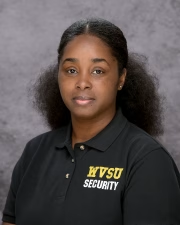Welcome
The Police Department at West Virginia State University is a full-service law enforcement agency. Our staff is fully committed and dedicated to maintaining a safe and secure environment for our students, faculty, employees, and the public. The department consists of a Director and certified academy trained police officers. Officers provide campus wide security coverage 24 hours a day, 365 days a year.
Our Team
University Police Department
West Virginia State University
305 Barron Drive, Ferrell House
Institute, WV 25112-1000
Phone: (304) 766-3353
Fax: (304) 766-5193
robinsaj@wvstateu.edu
If you need immediate assistance, call (304) 766-3353 or dial 911 in case of emergency.







